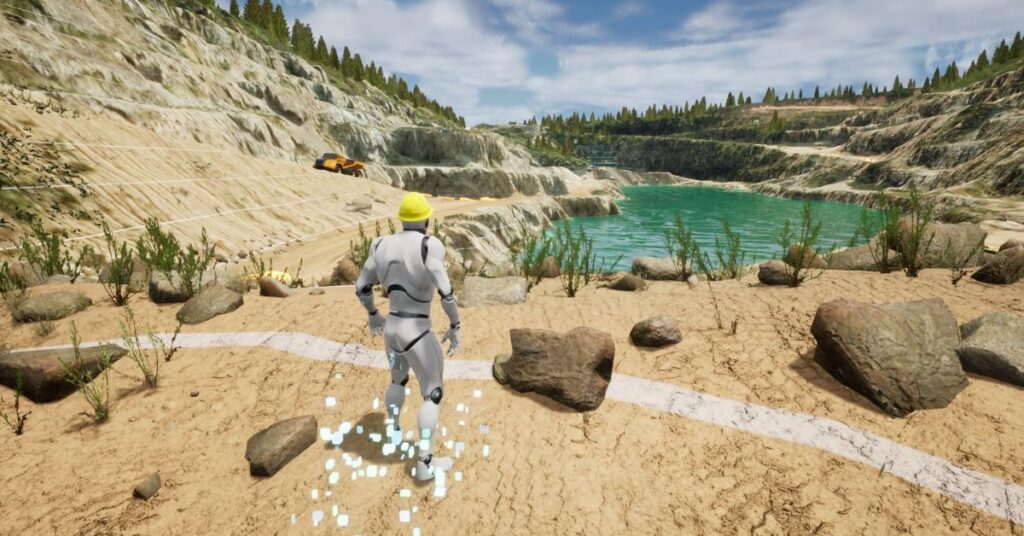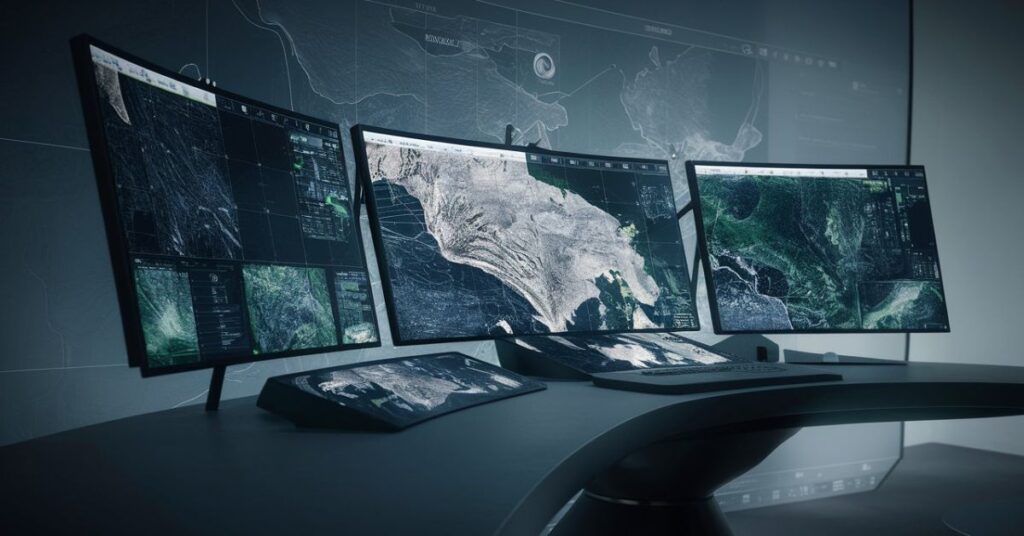
In our interconnected global, the capacity to understand and examine spatial statistics has become increasingly important across numerous domains. Enter geospatial technology, a revolutionary field that provides the tools and techniques to capture, analyze, and visualize data tied to specific geographic locations. This powerful generation has changed the way we perceive and interact with our environment. Supplying beneficial insights and solutions to challenges starting from city planning to environmental conservation and the past. Unveiling the Power of Geospatial Technology.
What is Geospatial?
The period “geospatial” refers to any records or records associated with a selected geographic vicinity or spatial reference. This data encompasses details about physical features, natural resources, infrastructure, population distribution, and other aspects of our world. By linking those numerous statistics points to their respective locations, geospatial generation enables us to gain a comprehensive knowledge of the spatial relationships and patterns that exist within our surroundings. Unveiling the Power of Geospatial Technology.
What is Geospatial Data?
Geospatial records form the spine of geospatial generation. It features an extensive variety of statistics immediately or not directly connected to a particular vicinity on the planet. This fact may be amassed from diverse assets. Which includes satellite imagery, aerial photographs, GPS gadgets, surveys, and even crowdsourced records from people.
Geospatial records can be divided into two most important classes:
- Vector statistics: Vector statistics represents geographic features as factors, lines, and polygons. Examples consist of:
- Points: Locations of buildings, landmarks, or specific coordinates
- Lines: Roads, rivers, or boundaries
- Polygons: Country borders, land parcels, or building footprints
2. Raster Data: Raster data consists of gridded or pixel-based representations of geographic information, often derived from satellite or aerial imagery. Examples include:
- Digital elevation models (DEMs)
- Land cover and land use data
- Satellite imagery and aerial photographs
What is Geospatial Technology?
Geospatial technology encompasses a wide range of tools, techniques, and methodologies used to acquire, process, analyze, and visualize geospatial data. It involves the integration of various disciplines, including geography, cartography, remote sensing, Geographic Information Systems (GIS), and spatial analysis. these technologies enable us to create correct maps, understand spatial styles, and make knowledgeable choices based on region-based totally facts.
Bigger Data, Better Insights
One of the key advantages of geospatial technology is its ability to handle and process vast volumes of spatial data from diverse sources. With the advent of advanced data collection methods. Such as remote sensing satellites and unmanned aerial vehicles (UAVs), the amount of geospatial data available has increased exponentially. these technologies permit us to create accurate maps, apprehend spatial styles, and make informed alternatives based on area-based complete data.
What is Geospatial Intelligence?
Geospatial intelligence, frequently referred to as GEOINT, is the system of collecting, analyzing, and interpreting geospatial data to guide selection-making approaches. It includes the combination of various geospatial technologies, consisting of far-flung sensing, GIS, and spatial evaluation, to offer actionable intelligence and situational focus. GEOINT plays a crucial role in areas such as national security, defense, intelligence, and emergency response, enabling informed decision-making and strategic planning. Unveiling the Power of Geospatial Technology.
Future of Geospatial Technology
The destiny of the geospatial era is poised for continued increase and innovation. With the increasing availability of high-resolution satellite imagery, and the integration of advanced sensors. And the adoption of emerging technologies like machine learning and artificial intelligence, the capabilities of geospatial technology are expanding rapidly. a few key traits shaping the future of this area include:

- Based totally structures and large statistics: analytics will facilitate the storage, processing, and evaluation of sizeable amounts of geospatial information, permitting more green and scalable solutions.
- Augmented reality (AR) and virtual truth (VR) programs: The integration of geospatial facts with AR and VR generation will revolutionize the manner we visualize and interact with spatial statistics, allowing immersive reports and extra effective choice-making.
As geospatial technology continues to evolve, its applications will become more diverse. And far-reaching, offering valuable insights and solutions to address global challenges in areas such as sustainable development, climate change mitigation, and disaster management.
What are Geospatial Technologies?
Geospatial technologies encompass a wide range of tools and techniques used to acquire, process, analyze, and visualize geospatial data. Some of the key geospatial technologies include:
- Geographic records structures (GIS): GIS software permits customers to create, control, analyze, and visualize geospatial statistics with the resource of mixing diverse records resources, together with maps, satellite tv for pc television for pc imagery, and tabular statistics.
- Some distance flung Sensing: The faraway sensing era, which incorporates satellites, planes, and drones, is used to acquire geospatial statistics from a distance, permitting the commentary of Earth’s ground and environment.
- Worldwide Positioning Machine (GPS): GPS generation offers correct region information through the manner of the usage of a community of satellites to triangulate a receiver’s role on Earth.
- Photogrammetry: Photogrammetry entails the introduction of 3-D fashions, maps, and measurements from overlapping images or aerial imagery.
- Mild detection and varying (LiDAR): The LiDAR era uses laser pulses to degree distances. And create substantially accurate 3-D representations of items and surfaces.
- Spatial Databases: Spatial databases are designed to shop, manage, and query geospatial facts, enabling efficient storage and retrieval of location-based statistics.
These technologies work together to facilitate the collection, processing, analysis, and visualization of geospatial data, enabling organizations and individuals to make informed decisions and gain valuable insights.
What is Geospatial Visualization?
Geospatial visualization is the manner of representing and speaking geospatial data in a visual layout. Which includes maps, charts, and 3-D fashions. This technique is crucial for understanding complex spatial relationships, patterns, and trends. That may not be immediately apparent in raw data. Geospatial visualization tools, which include GIS software programs and net-based mapping programs, allow users to create interactively. And dynamic visualizations, allowing them to explore and analyze facts from a couple of perspectives.
Powerful geospatial visualization can help decision-makers, researchers, and most people better realize and talk about spatial statistics. Facilitating informed selection-making and selling a deeper knowledge of our environment. Unveiling the Power of Geospatial Technology.
What is a Geospatial Analyst?
A geospatial analyst is a professional who specializes in acquisition, processing, and analysis. And interpretation of geospatial data using various geospatial technologies. Their primary responsibilities include:
- Facts collection: identifying and acquiring relevant geospatial information from numerous assets. Which includes satellite TV for PC imagery, aerial images, GPS surveys, and present databases.
- Information processing and control: Organizing, cleaning, and integrating geospatial records from more than one asset right into a coherent and usable format.
- Spatial evaluation: applying statistical and computational techniques to investigate and interpret geospatial facts, figuring out styles, traits, and relationships.
- Visualization and mapping: Creating maps, charts, and other visual representations to effectively communicate spatial information and analysis results.
FAQs
A: Geospatial technology refers to the digital tools and systems used to collect, store, analyze, and visualize geographic or spatial data. This includes technologies like GIS (geographic information systems), remote sensing, GPS, mapping software, and geospatial analytics.
A: Some key applications of geospatial technology include urban planning, infrastructure development, emergency response, natural resource management, transportation and logistics, agriculture, environmental monitoring, and more. The location-based intelligence provided helps organizations optimize operations and decision-making.
A: Some key advantages include increased efficiency, improved decision-making, ability to analyze trends over locations and time, better risk assessment and preparedness, enhanced collaboration through geospatial sharing capabilities, and cost savings from optimization of resources and processes.






![When was AI art invented? [1960-2024]](https://magazinescoverup.com/wp-content/uploads/2024/05/When-was-AI-art-invented-1960-2024-150x150.jpg)